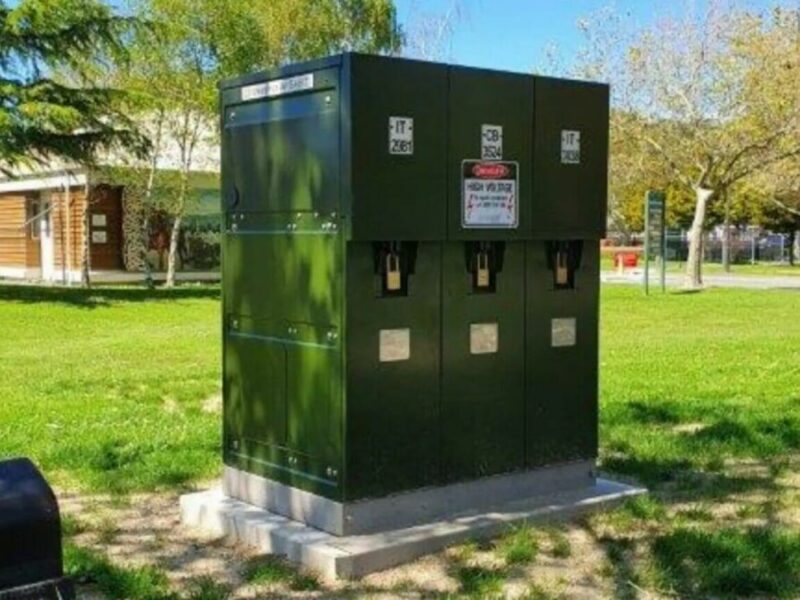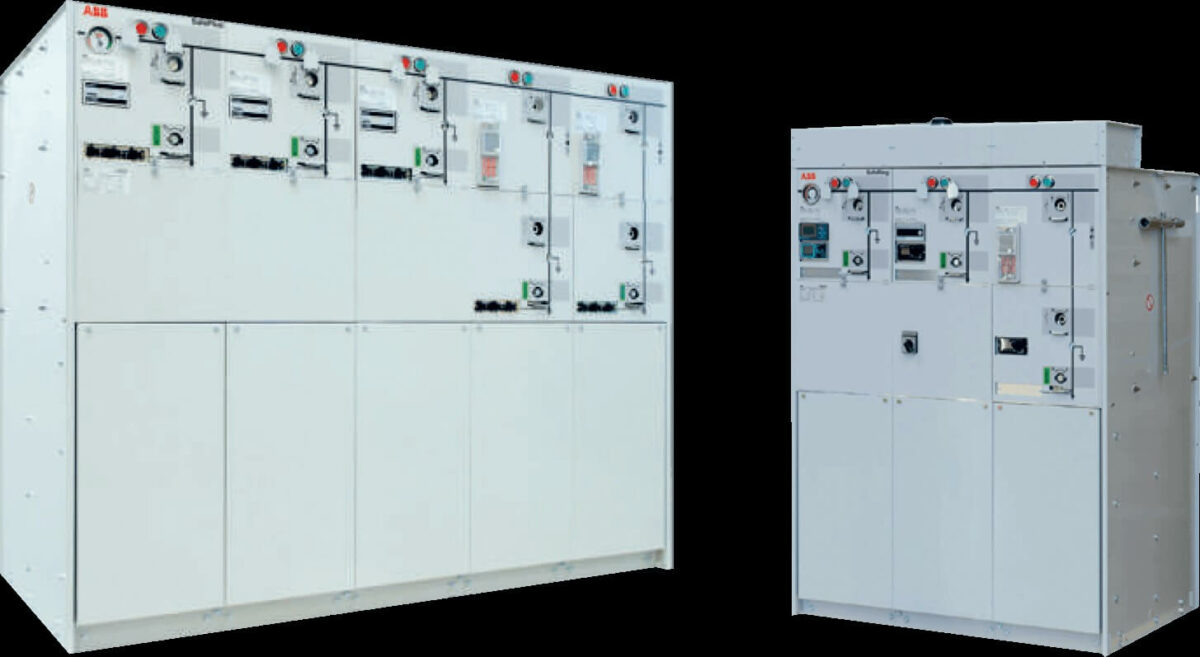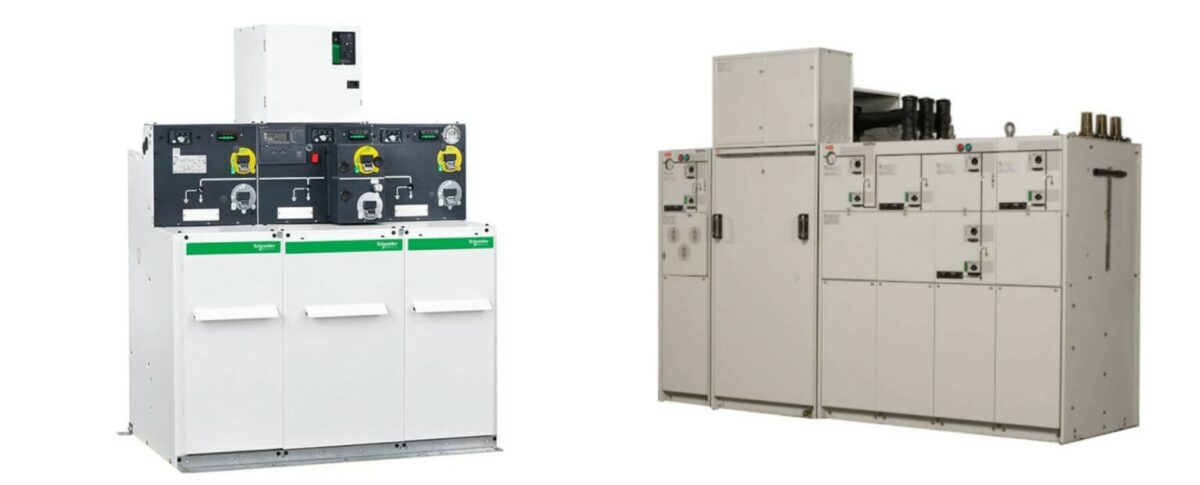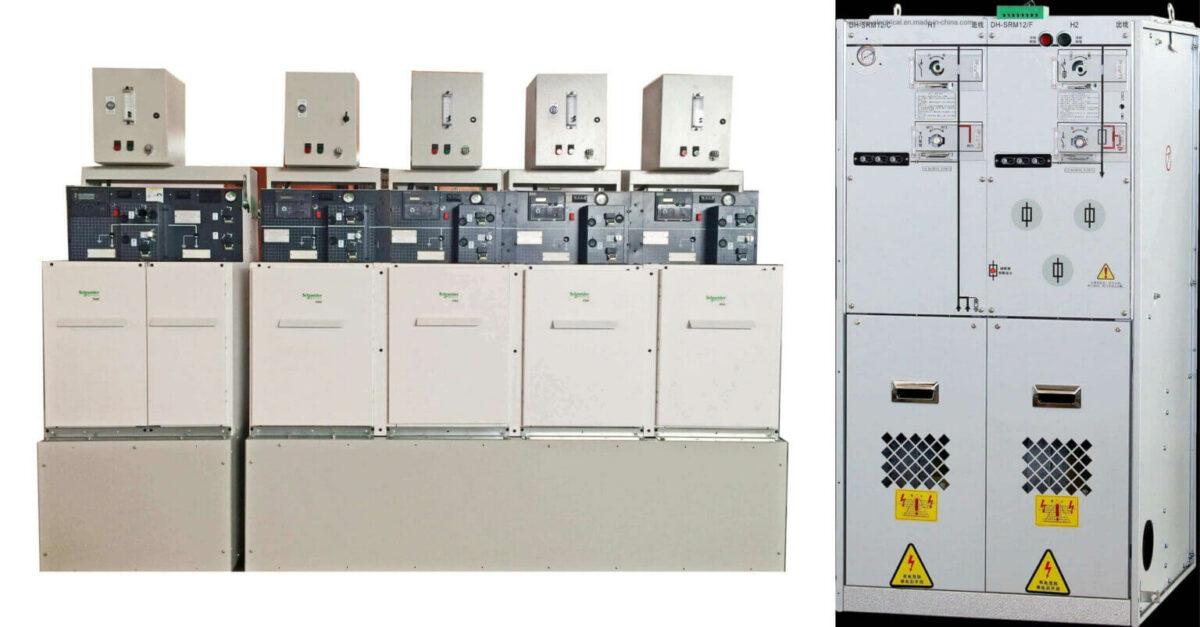
What is an RMU (Ring Main Unit)?
A Ring Main Unit (RMU) is a type of medium-voltage switchgear commonly used in secondary distribution networks. Designed for high reliability and compact size, RMUs allow for seamless switching between different power sources, ensuring continuous electricity supply even during faults or maintenance on the primary line. They incorporate load break switches, circuit breakers, or fuses, and are typically insulated using SF₆ gas or vacuum.
1. Purpose and Function of an RMU
The primary functions of an RMU are:
- Power Switching: Enables uninterrupted electricity supply by routing power through alternate feeders in case of a fault.
- Isolation: Isolates faulty sections to maintain safety and continuity in the network.
- Protection: Provides protection against short circuits, overloads, and ground faults using fuses or circuit breakers combined with protection relays.
RMUs are widely used in urban power grids, residential complexes, industrial facilities, airports, hospitals, and renewable energy plants like solar and wind farms.
2. Key Features of Ring Main Units
- Compact and Modular: Minimal footprint makes RMUs ideal for space-constrained environments.
- Factory-assembled and Sealed: Pre-assembled, tested, and sealed in a gas-insulated metal enclosure, ensuring high reliability and low maintenance.
- Flexible Configuration: Available in 2-, 4-, or 6-compartment layouts with various modules including transformer protection units, busbar sections, and metering units.
- Manual or Motorized Operation: Motor-operated versions support automation and SCADA integration.
- Indoor and Outdoor Applications: Available in IP-rated enclosures for different environments.
3. RMU Types
a. By Structure:
- Compact RMU
- Expandable RMU
b. By Insulation Medium:
- Air-Insulated RMU
- Vacuum-Insulated RMU
- SF₆ Gas-Insulated RMU
c. By Voltage Rating:
- Up to 24kV
- Up to 36kV

4. Components of an RMU
An RMU typically includes:
- Load Break Switches
- Circuit Breakers or Fusible Switches
- Busbars and Cable Terminals
- Current Transformers (CTs) and Voltage Transformers (VTs)
- Protection Relays
- Earthing Switches and Disconnectors
These components are housed in a sealed SF₆ tank or vacuum enclosure to ensure arc extinction and insulation.
5. Working Principle
The RMU functions as a looped system where:
- One incoming feeder brings in power via a breaker.
- Outgoing feeders distribute power via load break switches.
- If the main feeder fails, switching to an alternate feeder ensures continuous power.
- Integrated protection relays detect faults and trigger breakers for transformer protection.
- SF₆ gas pressure is monitored to ensure proper insulation and arc extinguishing capability.
6. Testing and Commissioning of RMUs
Typical RMU testing includes:
- Busbar Contact Resistance Measurement (using 100A DC injection)
- Insulation Resistance Testing (using 5kV or 500V megger for primary and secondary circuits)
- Circuit Breaker Timing and Contact Resistance Test
- Primary and Secondary Injection Test for CTs and Relays
- Mechanical Operation Test
- Remote Signaling and Function Verification
Testing ensures reliable operation when the RMU is required to switch during faults or maintenance.
7. Advantages of RMU Switchgear
- High Reliability: Ensures consistent operation with minimal manual intervention.
- Compact Design: Saves space and simplifies installation.
- Low Maintenance: Gas- or vacuum-insulated systems reduce wear and tear.
- Enhanced Safety: Enclosed components eliminate arc exposure.
- Smart Grid Ready: Can be integrated with remote monitoring and automation systems.
- Cost-Effective: Reduces both operational and downtime costs.

8. Limitations of RMUs
- Limited Scalability: Not ideal for large-scale high-voltage substations.
- Feature Trade-offs: Economical models may lack advanced automation or smart features.
9. RMU Applications
- Secondary Distribution Networks
- Compact Substations
- Renewable Energy Plants (Solar/Wind)
- Industrial and Commercial Buildings
- Urban and Residential Distribution Systems
- Ports, Airports, Hospitals, Shopping Centers

10. RMU vs VCB: What’s the Difference?
| Feature | RMU | VCB (Vacuum Circuit Breaker) |
|---|---|---|
| Function | Ring network switching & protection | Arc interruption in MV/HV circuits |
| Use Case | Secondary distribution systems | Primary switching and protection |
| Arc Extinguishing | SF₆ gas or vacuum | Vacuum |
| Application Area | Compact substations, urban loads | High voltage, metal-clad switchgear |
| Customization | Modular with LBS, fuse, CB options | Typically integrated in metal-clad gear |
11. Conclusion
The Ring Main Unit (RMU) is a robust and reliable solution for medium-voltage power distribution, offering enhanced safety, simplified operation, and minimal maintenance. With the growing need for compact and intelligent power distribution, RMUs are increasingly used in modern electrical networks. Whether for industrial use, urban infrastructure, or renewable energy, RMUs provide a cost-effective and high-performance solution for uninterrupted power delivery.
Professiona Switchgear supplier and manufacturer
- Zhejiang GONGSHUN Electrical Co.,Ltd (electricgs.com), Our company was founded in the late 1990s, specializing in the production of inflatable cabinets, SF6 inflatable cabinets, and various high and low voltage complete sets of electrical equipment. It has multiple subsidiaries under its jurisdiction, including high-voltage load switch branch, high-voltage circuit breaker branch, high-voltage fuse branch, and technology development branch.Our technical expertise, comprehensive product portfolio and long-term rich experience are helping many customers in need to solve their power problems. We’re happy to help at any time. Whether you need application product advice or technical assistance, our global service team is committed to providing you with the right support. For more technical information about medium voltage earthing switch, feel free to contact us, send an email to gongshun@electric-cn.com
- Our company specializes in producing 12KV-40.5KV series high-voltage electrical products: FZN58, FLN48, FLN36, FZRN25, FZN21, FN18, ZFN16, FN12, FN8, FN7, FN5, XRNT, XRNP, VS1, ZN28, ZW8, ZW32, JN15, GN19, GN22, GN24, GN30, CLXGN15-12, HXGN □ -12, DXG-12 (L), DFW □ -12 high-voltage cable branch box, CLXGN □ -12 (SF6) series inflatable cabinet 12KV and 35KV cable accessories, etc; CLVXP-12 indoor AC high voltage fixed switchgear, CL-SIS-12 compact solid insulated ring main unit, professional assembly Schneider SC6 (SF6) series load switchgear, ABB produced SFG (SF6) series load switchgear and other series products; Distribution and agency of high-voltage load switches and inflatable cabinets produced by Schneider Electric and ABB; Siemens produces the 3AJ1 series of indoor medium voltage vacuum circuit breakers and other related products. The company has a complete range of products and has been operating safely on domestic and international power grids for a long time, receiving unanimous praise from both new and old users. Among them, multiple products such as FZRN25, FN12, FLN36-12, XRNT-12 have been exported to various countries and regions in East Asia, South Asia, Southeast Asia, Africa, and the United States.
